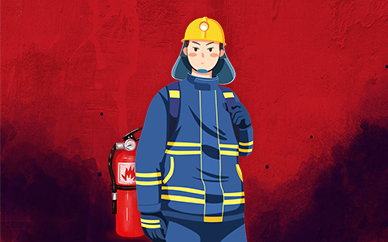We all know that many more people today are right-handed than left-handed. Can one trace this same pattern far back in prehistory? Much of the evidence about right-hand versus left-hand dominance comes from stencils and prints found in rock shelters in Australia and elsewhere, and in many Ice Age caves in France, Spain, and Tasmania. When a left hand has been stenciled, this implies that the artist was right-handed, and vice versa. Even though the paint was often sprayed on by mouth, one can assume that the dominant hand assisted in the operation. One also has to make the assumption that hands were stenciled palm downward—a left hand stenciled palm upward might of course look as if it were a right hand. Of 158 stencils in the French cave of Gargas, 136 have been identified as left, and only 22 as right; right-handedness was therefore heavily predominant.
Cave art furnishes other types of evidence of this phenomenon. Most engravings, for example, are best lit from the left, as befits the work of right-handed artists, who generally prefer to have the light source on the left so that the shadow of their hand does not fall on the tip of the engraving tool or brush. In the few cases where an Ice Age figure is depicted holding something, it is mostly, though not always, in the right hand.
Clues to right-handedness can also be found by other methods. Right-handers tend to have longer, stronger, and more muscular bones on the right side, and Marcellin Boule as long ago as 1911 noted the La Chapelle-aux-Saints Neanderthal skeleton had a right upper arm bone that was noticeably stronger than the left. Similar observations have been made on other Neanderthal skeletons such as La Ferrassie I and Neanderthal itself.
 (资料图)
(资料图)
Fractures and other cut marks are another source of evidence. Right-handed soldiers tend to be wounded on the left. The skeleton of a 40- or 50-year-old Nabatean warrior, buried 2,000 years ago in the Negev Desert, Israel, had multiple healed fractures to the skull, the left arm, and the ribs.
Tools themselves can be revealing. Long-handed Neolithic spoons of yew wood preserved in Alpine villages dating to 3000 B.C. have survived; the signs of rubbing on their left side indicate that their users were right-handed. The late Ice Age rope found in the French cave of Lascaux consists of fibers spiraling to the right, and was therefore tressed by a righthander.
Occasionally one can determine whether stone tools were used in the right hand or the left, and it is even possible to assess how far back this feature can be traced. In stone toolmaking experiments, Nick Toth, a right-hander, held the core (the stone that would become the tool) in his left hand and the hammer stone in his right. As the tool was made, the core was rotated clockwise, and the flakes, removed in sequence, had a little crescent of cortex (the core’s outer surface) on the side. Toth’s knapping produced 56 percent flakes with the cortex on the right, and 44 percent left-oriented flakes. A left-handed toolmaker would produce the opposite pattern. Toth has applied these criteria to the similarly made pebble tools from a number of early sites (before 1.5 million years) at Koobi Fora, Kenya, probably made byHomo habilis. At seven sites he found that 57 percent of the flakes were right-oriented, and 43 percent left, a pattern almost identical to that produced today.
About 90 percent of modern humans are right-handed: we are the only mammal with a preferential use of one hand. The part of the brain responsible for fine control and movement is located in the left cerebral hemisphere, and the findings above suggest that the human brain was already asymmetrical in its structure and function not long after 2 million years ago. Among Neanderthalers of 70,000–35,000 years ago, Marcellin Boule noted that the La Chapelle-aux-Saints individual had a left hemisphere slightly bigger than the right, and the same was found for brains of specimens from Neanderthal, Gibraltar, and La Quina.
【Paragraph 1】We all know that many more people today are right-handed than left-handed. Can one trace this same pattern far back in prehistory? Much of the evidence about right-hand versus left-hand dominance comes from stencils and prints found in rock shelters in Australia and elsewhere, and in many Ice Age caves in France, Spain, and Tasmania. When a left hand has been stenciled, this implies that the artist was right-handed, and vice versa. Even though the paint was often sprayed on by mouth, one can assume that the dominant handassisted inthe operation. One also has to make the assumption that hands were stenciled palm downward—a left hand stenciled palm upward might of course look as if it were a right hand. Of 158 stencils in the French cave of Gargas, 136 have been identified as left, and only 22 as right; right-handedness was therefore heavily predominant.
1. It canbe inferred from paragraph 1 that even when paint was sprayed by mouth to make a hand stencil
○there was no way to tell which hand was stenciled
○the stenciledhand was the weaker hand
○the stenciled hand was the dominant hand
○artists stenciled more images of the dominant hand than they did of the weak
【Paragraph 2】Cave art furnishes other types of evidence of this phenomenon.Most engravings, for example, are best lit from the left, as befits the work of right-handed artists, who generally prefer to have the light source on the left so that the shadow of their hand does not fall on the tip of the engraving tool or brush.In the few cases where an Ice Age figure isdepictedholding something, it is mostly, though not always, in the right hand.
2. which of the sentences below best expresses the essential information in thehighlighted sentencein the passage? Incorrect choices change the meaning in important ways or leave out essential information.
○Right-handedartists could more easily have avoided casting shadows on their work, because engravings in prehistoric caves were lit from the left.
○The tips of engraving tools and brushes indicate that these instruments were used by right-handed artists whose work was lit from the left.
○The best lighting for most engravings suggests that they were made by right-handed people trying to avoid the shadow of their hands interfering with their work.
○Right-handedartists try to avoid having the brush they are using interfere with the light source.
【Paragraph 1】We all know that many more people today are right-handed than left-handed. Can one trace this same pattern far back in prehistory? Much of the evidence about right-hand versus left-hand dominance comes from stencils and prints found in rock shelters in Australia and elsewhere, and in many Ice Age caves in France, Spain, and Tasmania. When a left hand has been stenciled, this implies that the artist was right-handed, and vice versa. Even though the paint was often sprayed on by mouth, one can assume that the dominant hand assisted in the operation. One also has to make the assumption that hands were stenciled palm downward—a left hand stenciled palm upward might of course look as if it were a right hand. Of 158 stencils in the French cave of Gargas, 136 have been identified as left, and only 22 as right; right-handedness was therefore heavily predominant.
【Paragraph 2】Cave art furnishes other types of evidence of this phenomenon. Most engravings, for example, are best lit from the left, as befits the work of right-handed artists, who generally prefer to have the light source on the left so that the shadow of their hand does not fall on the tip of the engraving tool or brush. In the few cases where an Ice Age figure is depicted holding something, it is mostly, though not always, in the right hand.
【Paragraph 3】Clues to right-handedness can also be found by other methods. Right-handers tend to have longer, stronger, and more muscular bones on the right side, and Marcellin Boule as long ago as 1911 noted the La Chapelle-aux-Saints Neanderthal skeleton had a right upper arm bone that was noticeably stronger than the left. Similar observations have been made on other Neanderthal skeletons such as La Ferrassie I and Neanderthal itself.
3. Accordingto paragraph 3, the La Chapelle-aux-Saints Neanderthal skeleton can be identified as right-handed because
○other Neanderthal skeletons found nearby are also right-handed
○the right arm bone is stronger than the left
○it is similar to skeletons of La Ferrassie I and Neanderthal
○the right sideof the skeleton shows less evidence of fractures
【Paragraph 4】Fractures and other cut marks are another source of evidence. Right-handed soldiers tend to be wounded on the left. The skeleton of a 40- or 50-year-old Nabatean warrior, buried 2,000 years ago in the Negev Desert, Israel, had multiple healed fractures to the skull, the left arm, and the ribs.
4. Which of the following statements about fractures and cut marks can be inferred from paragraph 4?
○Fractures and cut marks caused by right-handed soldiers tend to occur on the right side of the injured party’s body.
○The right arm sustains more injuries because, as the dominant arm, it is used more actively.
○In most people, the left side of the body is more vulnerable to injury since it is not defended effectively by the dominant arm.
○Fracturesand cut marks on fossil humans probably occurred after death.
【Paragraph 5】Tools themselves can be revealing. Long-handed Neolithic spoons of yew wood preserved in Alpine villages dating to 3000 B.C. have survived; the signs of rubbing on their left side indicate that their users were right-handed. The late Ice Age rope found in the French cave of Lascaux consists of fibers spiraling to the right, and was therefore tressed by a righthander.
5. Accordingto paragraph 5, what characteristic of a Neolithic spoon would imply that the spoon’s owner was right-handed?
○The direction of the fibers
○Its long handle
○The yew wood it is carved from
○Wear on its left side
6. In paragraph5, why does the author mention the Ice Age rope found in the French cave of Lascaux?
○As an example of an item on which the marks of wear imply that it was used by a right-handed person
○Because tressing is an activity that is easier for a right-handed person than for a left-handed person
○Because the cave of Lascaux is the site where researchers have found several prehistoric tools made for right-handed people
○As an example of an item whose construction shows that it was right handed made by a right-person
【Paragraph 6】Occasionally one can determine whether stone tools were used in the right hand or the left, and it is even possible to assess how far back this feature can be traced. In stone toolmaking experiments, Nick Toth, a right-hander, held the core (the stone that would become the tool) in his left hand and the hammer stone in his right. As the tool was made, the core was rotated clockwise, and the flakes, removed in sequence, had a little crescent of cortex (the core’s outer surface) on the side. Toth’s knapping produced 56 percent flakes with the cortex on the right, and 44 percent left-oriented flakes. A left-handed toolmaker would produce the opposite pattern. Toth has applied thesecriteriato the similarly made pebble tools from a number of early sites (before 1.5 million years) at Koobi Fora, Kenya, probably made byHomo habilis. At seven sites he found that 57 percent of the flakes were right-oriented, and 43 percent left, a pattern almost identical to that produced today.
7. What was the purpose of Toth’s toolmaking experiment described in paragraph 6?
○To shape tools that could be used by either hand
○To produce replicas of early tools for display in museums
○To imitate the production of pebble tools from early sites
○To determine which hand made the early tools
【Paragraph 7】About 90 percent of modern humans are right-handed: we are the only mammal with a preferential use of one hand. The part of the brain responsible for fine control and movement is located in the left cerebral hemisphere, and the findings above suggest that the human brain was already asymmetrical in its structure and function not long after 2 million years ago. Among Neanderthalers of 70,000–35,000 years ago, Marcellin Boule noted that the La Chapelle-aux-Saints individual had a left hemisphere slightly bigger than the right, and the same was found for brains of specimens from Neanderthal, Gibraltar, and La Quina.
8.. Whatis the author’s primary purpose in paragraph 7?
○To illustrate the importance of studying the brain
○To demonstrate that human beings are the only mammal to desire fine control of movement
○To contrast thefunctions of the two hemispheres of the brain
○To demonstratethat right-hand preference has existed for a long time
【Paragraph 1】We all know that many more people today are right-handed than left-handed. Can one trace this same pattern far back in prehistory?■Much of the evidence about right-hand versus left-hand dominance comes from stencils and prints found in rock shelters in Australia and elsewhere, and in many Ice Age caves in France, Spain, and Tasmania.■When a left hand has been stenciled, this implies that the artist was right-handed, and vice versa.■Even though the paint was often sprayed on by mouth, one can assume that the dominant hand assisted in the operation. One also has to make the assumption that hands were stenciled palm downward—a left hand stenciled palm upward might of course look as if it were a right hand.■Of 158 stencils in the French cave of Gargas, 136 have been identified as left, and only 22 as right; right-handedness was therefore heavily predominant.
9. Look at the four squares [■] that indicate where the following sentence could be added to the passage.
The stencils of hands found in these shelters and caves allow us to draw conclusions about which hand was dominant.
Where would the sentence best fit?
10.Directions:An introductory sentence for a brief summary of the passage is provided below. Complete the summary by selecting the THREE answer that express the most important ideas in the passage. Some sentences do not belong in the summary because they express ideas that not presented in the passage or are minor ideas in the passage.This question is worth 2 points.
Several categories of evidence indicate that people have always been predominantly right-handed
●
●
●
Answer Choices
○Stencils of right-handed figures are characteristic of cave art in France, Spain, and Tasmania.
○Signs on the skeletal remains of prehistoric figures, including arm-bone size and injury marks, imply that these are the remains of right-handed people.
○Instruments such as spoons, ropes, and pebble tools show signs that indicate they were used or constructed by right-handed people.
○The amount of prehistoric art created by right-handed artists indicates that left-handed people were in the minority.
○Neanderthal skeletons often have longer finger bones in the right hand, which is evidence that the right hand was stronger.
○Nick Toth, a modem right-handed toolmaker. has shown that prehistoric tools were knapped to fit the right hand.
标签:
相关新闻

保险时讯
07-03
07-03
07-02
07-02
07-02
07-01
07-01
07-01
07-01
07-01

聚焦百姓
更多> 【环球报资讯】vivox90pro对比小米12u(小米mixfold和小米12u哪个好)
【环球报资讯】vivox90pro对比小米12u(小米mixfold和小米12u哪个好)
 123名选手角逐“番禺工匠” 全球要闻
123名选手角逐“番禺工匠” 全球要闻
 肯尼亚西北部发生严重车祸造成至少45人死亡-天天快资讯
肯尼亚西北部发生严重车祸造成至少45人死亡-天天快资讯
 【全球聚看点】我国制造业景气水平总体有所改善
【全球聚看点】我国制造业景气水平总体有所改善
 视焦点讯!TV动画《我推是反派大小姐》公开新视觉图与 Anime Expo 2023 参展视觉图,10月开播!
视焦点讯!TV动画《我推是反派大小姐》公开新视觉图与 Anime Expo 2023 参展视觉图,10月开播!
 【全球速看料】秦皇岛北戴河新区:清华大学生命健康项目路演成功举行
【全球速看料】秦皇岛北戴河新区:清华大学生命健康项目路演成功举行
 高温再上线 如何预防中暑?专家解答 世界观热点
高温再上线 如何预防中暑?专家解答 世界观热点
 天天滚动:2022年以来全国海关立案侦办走私毒品犯罪案件1037起
天天滚动:2022年以来全国海关立案侦办走私毒品犯罪案件1037起
 中信证券:机器人行业高速发展 稀土永磁迎新增长极
中信证券:机器人行业高速发展 稀土永磁迎新增长极
 服禫(对于服禫简单介绍)|全球观察
服禫(对于服禫简单介绍)|全球观察
 格罗西将访日 韩媒质疑日方在核污染水排海问题上贿赂国际原子能机构官员
格罗西将访日 韩媒质疑日方在核污染水排海问题上贿赂国际原子能机构官员
 76人消息:哈登面临两难选择,悍将有望留队,哈里斯令人动容
76人消息:哈登面临两难选择,悍将有望留队,哈里斯令人动容
 天天实时:香港交易所计划于10月推出首次公开招股结算平台FINI
天天实时:香港交易所计划于10月推出首次公开招股结算平台FINI
 8宗底价、1宗触顶,天津土拍收金122.66亿元
8宗底价、1宗触顶,天津土拍收金122.66亿元
 快报:云南陇川发现植物“活化石”桫椤群
快报:云南陇川发现植物“活化石”桫椤群
 中国移动5G达成全球领先 5G新通话今年全网商用:不加好友开视频
中国移动5G达成全球领先 5G新通话今年全网商用:不加好友开视频
 新动态:林园针对A股调整发声:现在已经被低估!机会是留给乐观的人的,在这些领域被套了可以再买一点
新动态:林园针对A股调整发声:现在已经被低估!机会是留给乐观的人的,在这些领域被套了可以再买一点
 中融股份拟注销子公司常州中融外包服务有限公司|环球微速讯
中融股份拟注销子公司常州中融外包服务有限公司|环球微速讯
 又一“创新”被禁?盲目跟风特斯拉的车企,是时候醒醒了!|焦点简讯
又一“创新”被禁?盲目跟风特斯拉的车企,是时候醒醒了!|焦点简讯
 香港大学复旦大学悉尼大学,将在这方面开展合作
香港大学复旦大学悉尼大学,将在这方面开展合作
财产保险
 【环球报资讯】vivox90pro对比小米12u(小米mixfold和小米12u哪个好)
【环球报资讯】vivox90pro对比小米12u(小米mixfold和小米12u哪个好)
 123名选手角逐“番禺工匠” 全球要闻
123名选手角逐“番禺工匠” 全球要闻
 肯尼亚西北部发生严重车祸造成至少45人死亡-天天快资讯
肯尼亚西北部发生严重车祸造成至少45人死亡-天天快资讯
 【全球聚看点】我国制造业景气水平总体有所改善
【全球聚看点】我国制造业景气水平总体有所改善
 视焦点讯!TV动画《我推是反派大小姐》公开新视觉图与 Anime Expo 2023 参展视觉图,10月开播!
视焦点讯!TV动画《我推是反派大小姐》公开新视觉图与 Anime Expo 2023 参展视觉图,10月开播!
 【全球速看料】秦皇岛北戴河新区:清华大学生命健康项目路演成功举行
【全球速看料】秦皇岛北戴河新区:清华大学生命健康项目路演成功举行
 高温再上线 如何预防中暑?专家解答 世界观热点
高温再上线 如何预防中暑?专家解答 世界观热点
 天天滚动:2022年以来全国海关立案侦办走私毒品犯罪案件1037起
天天滚动:2022年以来全国海关立案侦办走私毒品犯罪案件1037起
 中信证券:机器人行业高速发展 稀土永磁迎新增长极
中信证券:机器人行业高速发展 稀土永磁迎新增长极
 服禫(对于服禫简单介绍)|全球观察
服禫(对于服禫简单介绍)|全球观察